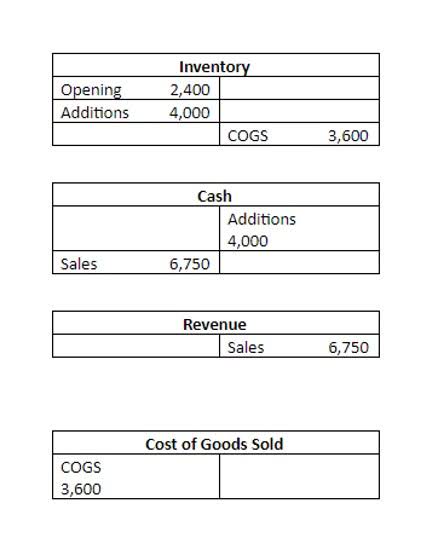
Ensure that each transaction has clear supporting documentation to provide clarity and traceability. For instance, ABC Co has recorded the repair of non-current assets as capital expenditure increases the value of the non-current assets. Instead, such repair should have been treated as revenue expenditure and Accounting for Churches record as repair expense in the profit and loss account. An error of original entry occurs when an incorrect amount is posted to the correct account. Misclassifications may be identified by external auditors as potentially fraudulent. For example, if an accountant records a business expense as a sale, it looks suspicious.
Correcting Accounting Errors

This creates a complete, organized digital record of every transaction that’s easily accessible when needed for expense reports, vendor payments, or audits. Charge card programs with built-in controls can prevent unauthorized purchases before they retained earnings happen. By setting specific spending limits and approval rules for each employee or department, you can ensure purchases stay within budget and policy. Understanding these accounting challenges—and the modern tools available to solve them—can help you build stronger financial operations and better serve your growing business. The integrity of the information in your accounting system is only as good as the data you enter.
Get instant access to the one-stop news source for business lawyers

Error of duplication occurs when you enter the same item of income or expense more than once. For example, such an error can happen when more than one person has access to the accounting system and each makes the same entry. Compensating error is really two errors that occur at the same time; one offsets the other. For example, you erroneously overstate income by $1,000, but you also overstate an expense by a like amount so it all evens out even though both entries are wrong. This can easily happen if you misplace documentation—a receipt or invoice—so that it never gets recorded. A small painting company receives $500 from a client in payment for an invoice.
Transposition Error
- Instead of recording a $250 invoice in your accounts receivable, you erroneously put it in accounts payable (i.e., you record it as an expense).
- When customers pay late, it creates cash flow problems that can affect your ability to pay your own bills and invest in growth opportunities.
- Additionally, data entry errors can result in even more issues in the future, like throwing off trial balance and reconciliation.
- Keeping financial records thorough and accurate is the best way to ensure that your business is prepared for any situation that comes its way.
- No matter how fast-paced your business moves, it is crucial to stay on top of tax deadlines and federal regulations.
- Later on, whatever errors are detected are then rectified in the suspense account.
- Alternatively, principle errors can also occur when an accountant fails to adhere to internal accounting controls.
This refers to errors that arise when financial records are not properly organized, stored, or classified. It can lead to missing documents, difficulty in tracing transactions, and improper recording of financial information. The accounting errors, then, can be divided into two main groups; the errors where the trial balance still balances and errors that cause the trial balance imbalance.
- The best way to avoid classification errors is to establish clear procedures and policies.
- Taking these steps is the best way for accountants to ensure increased success for the company while steering clear of common careless mistakes.
- This not only reduces errors but also frees up your finance professionals for more strategic work.
- The best way to spot reconciliation errors is by looking out for unmatched entries or balances that do not add up correctly.
- It can lead to missing documents, difficulty in tracing transactions, and improper recording of financial information.

If the error impacts previously filed financial statements significantly, you’ll need to consider restating the affected reports. If syncing with apps has stopped, accounts don’t balance, or entries are miscategorized, it’s possible there’s been a misuse of accounting software. Reconciliation allows you to validate the entries in your books, like a double-check before closing. If the balances don’t add up or you have an unmatched entry, you likely have a reconciliation error. You can prevent closing errors by setting a closing password in your accounting software.
- It could be the utilization of trial balance, matching business receipts with accounting transactions, etc.
- Reconciliation errors can be the result of inconsistent account reconciliation.
- These classification errors often occur when multiple team members handle expenses without clear guidelines or when rushing to categorize large volumes of transactions.
- All such information is provided solely for convenience purposes only and all users thereof should be guided accordingly.
Example 7: Recurring Transaction Missed
- We only notice them when something seems off in the money reports or account books.
- There are also errors of principle, where a transaction is not in accordance with the applicable accounting principles, and compensating errors, where two or more inaccuracies cancel each other out.
- The journal entry adjusts the retained earnings (profit minus expenses) for a certain accounting period.
- By setting specific spending limits and approval rules for each employee or department, you can ensure purchases stay within budget and policy.
Reconciliation errors can create an inaccurate financial record for your business, which is particularly important come tax time. Leaving transactions unmatched can also prevent you from realizing that your business is missing money. Entry reversal throws off the accuracy of your books and financial statements.
Macy’s $151M freight accounting scandal: What happened with parcel deliveries?

Therefore, intentional errors are excluded from this article’s discussion of how errors should be rectified. When month-end close drags on, it can affect everything from board reporting to strategic planning. The problem becomes even more complex when payments require multiple approvals or when there’s uncertainty about who needs to approve specific types of payments. This helps maintain strong vendor relationships while avoiding late fees and taking advantage of early payment discounts when available. This issue often arises when approval processes are unclear or when employees struggle to meet deadlines because the official process takes too long.

A main part of the accounting process is payroll, and paying your employees correctly needs to be a priority. The potential impact of transposition errors varies depending on the entry, but they accounting errors could result in a loss of funds for your business. An error of original entry is when the wrong amount is posted to an account. The error posted for the wrong amount would also be reflected in any of the other accounts related to the transaction. In other words, all of the accounts involved would be in balance but for the wrong amounts.
